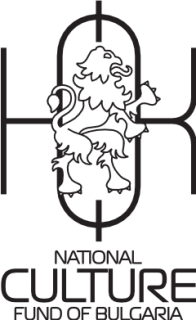There are probably more severe anomalies than snowfall in the height of summer. However, on the scale of the unusual, such a phenomenon ranks quite high. And if it fails to shake the apathetically stagnant barometer of humanity regarding what is right and abnormal, moral and immoral, it at least creates a sense of discomfort due to the extraordinariness of its presence.
Snow will cover the courtyard of the Bulgarian Pavilion at the 19th Venice Architecture Biennale, welcoming visitors from May 10 to November 23 this year. And most likely, it will provoke reflections on global warming and the role of both collective and artificial intelligence in crisis resolution. Named Pseudonature, the project by its creator and pavilion curator, Yassen Markov, sets a clear interpretative direction through a complex system combining a snow machine and solar panels. In this system, a curious symbiosis unfolds between the energy provider (the sun) and the consumer (the machine), creating an ironic situation—whenever the accumulated snow on the panels reaches a critical mass, the process halts, resuming only after the snow melts under the sun’s rays. Beyond its apparent environmental paradox, the installation captivates through its overall conceptual framework.
The installation at the exhibition hall Tiziano at the Don Orione Artigianelli cultural center continues inside. This space is designed as a contemporary, stylised revival-era interior, featuring dim lighting, a brightly blazing fireplace, and a vast carpet inviting visitors to sit. The contrast between the summer temperatures outside and the warm, intimate setting inside highlights the presence of fire—a counterpoint to the snow outside and a metaphor for intelligence itself. While referencing traditional Bulgarian domestic culture, the enclosed space also provides an opportunity for contemplation and reflection on the falling snow outside.
“I propose an abstracted living room with a hearth. The fireplace has always been the center of family interactions, a place for gathering, conversation, and decision-making. In this quiet setting, with a view of the courtyard, I invite visitors to reconsider their impact and contribute to the creation of new visions for the future,” explains Yassen Markov.
To enhance the immersive experience, Markov has invited Rosie Eisor (from the collective Blood Becomes Water) to create a strikingly large carpet featuring hallas—mythological figures from Bulgarian folklore. As masters of the natural elements, their appeasement brings forth a bountiful harvest and prosperity. The creative team also includes digital artist Ivelina Ivanova, who presents a post-apocalyptic vision of the future through an interactive installation-game on a vintage 90s computer. Meanwhile, Kai Steinsträßer, a student, is responsible for the visual communication of Pseudonature.
The exhibition catalog, titled Radical Recipes for a Better Climate, serves as the project’s lasting legacy. It compiles a collection of "recipes" from ecologists, scientists, designers, politicians, and other experts on the relationship between humans, nature, and technology. During the exhibition, visitors will also be invited to submit their own "recipes" via a specially designed app. At the end of the event, an AI system will process all the submitted ideas and merge them into a unified document—a speculative proposal for a global, unbiased constitution for good weather.
Yassen Markov defends the seemingly superficial and populist approach of incorporating AI, arguing that it ensures impartiality, non-partisanship, and liberalism. Beyond the sensory experience, the installation confronts visitors with the responsibility of recognizing their own role in shaping the nature of the future.
"I'm not a very good architect," says Yassen Markov. "In fact, I sell flowers and gifts and run a bar in Munich and Stuttgart." Throughout his career, spanning over 15 years, Markov has navigated various professional challenges and architectural typologies. Known under the alias TECHNOBETON, he operates as an architect, designer, and musician. The apparent ease with which he developed the Pseudonature concept speaks to his flexibility of thought and his freedom in interpreting architecture as a discipline. (The article continues on the VIJ! website)
The article was prepared by Komplekt at the invitation of VIJ! magazine for their 143rd issue / April 2025. You can read the whole text on their website here.
All visuals ©Pseudonature, 2025
